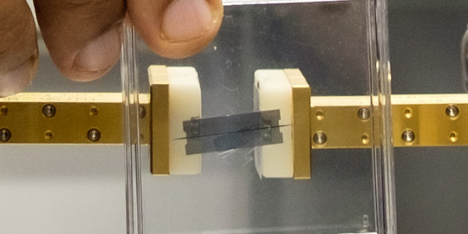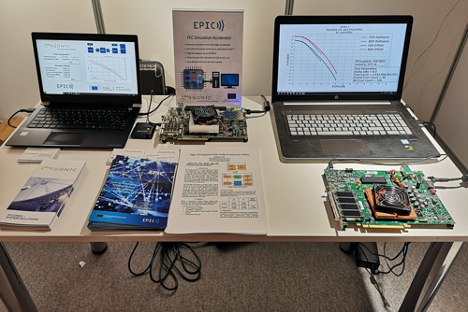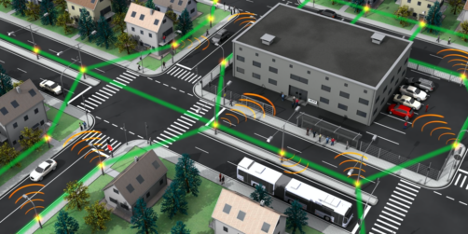Recent research and public policy statements expect 6G technologies to be ready for customers in the next decade. In a white paper published in July 2020, the Samsung Research team expects 6G initial commercialization in 2028. And a development strategy formulated by the Japanese government foresees a “Beyond 5G Ready” stage between 2027 and 2029.
So, there is a long way to go if the next generation of networks is to come to fruition. Yet, recent achievements showcase how the right environment for the technology is being set now.
Since 2019, several initiatives worldwide have accomplished milestones to support 6G development. Especially in the Terahertz (THz) range, recent experiments have produced the high data rates required for some 6G applications.
“I would be very optimistic that THz technologies for communications are being picked up quite fast,” believes Christian Koos, a professor at Karlsruhe Institute of Technology (KIT). He is part of a KIT group of researchers who developed a successful concept for THz transmission.
“The need for high speed wireless links is certainly there in 6G application scenarios. If it turns out to be a commercially viable option, I think we can see THz transceivers within the next four or five years,” Koos envisions.
Innovations to feed a new era
THz frequencies have never been used in telecommunications. That calls for new devices; for example, in 2019, researchers from Nanyang Technological University (NTU) in Singapore and Osaka University in Japan built a chip that can actually transmit and process data using THz frequencies, reaching 16 Gbps in tests.

Chip developed by researchers at NTU and Osaka University reached 16 Gbps during the tests last year
According to NTU Associate Professor Ranjan Singh, leader of the project, the group expects to achieve 100 Gbps by using complex modulation schemes. The main reason why it is possible is an exciting finding.
“We discovered a very robust waveguide that guides the THz waves with almost zero loss. And we showed in our work that these waves can be guided around extremely sharp bends on a silicon chip,” the professor explained in an interview with 6GWorld.
“If you can do it on chips, there is a very high possibility that you could integrate this on-chip with the waveguide platform. And because we do it with silicon, we think that it has tremendous potential for commercialization.”
Singh foresees chips achieving Tbps speeds in maybe five years. However, the group conducted the tests with an antenna-free structure, which means it was essentially a wired experiment.
Other professionals and companies are trying to go wireless, though.
In February 2019, the EPIC consortium ran a demonstration of its wireless ecosystem, a combination of self-developed algorithms and system architecture. The project, formed by eight European companies and universities whose goal is to implement the next generation of Forward-Error-Correction (FEC) technology for Beyond 5G, managed to reach speeds topping 107 Gbps, operating in frequencies above 100 GHz, or 0.1 THz.

EPIC’s setup that reached 106 Gbps during a demo in February 2019: algorithms and architecture were its main components
“[The group] developed technology, advanced decoders to decode packets above 100 Gbps, and invented decoding algorithms and new channel codes as well,” describes Onur Sahin, member of technical staff of Innovation Labs at InterDigital, one of EPIC’s members.
According to Sahin, the team exhibited the algorithms developed on Field-Programmable Gate Array (FPGA) platforms during the demonstration.
“FPGA platforms are proof-of-concept platforms where you can exhibit the algorithms in real time. And to be more specific, the design [exhibited] was based on polar codes, which are the new channel codes created by professor Erdal Arikan. Together, we developed Beyond 5G polar codes, which scale significantly in terms of data rates with respect to their current state-of-the-art.”
Another advancement in THz wireless transmission comes from Germany. A group of researchers at KIT developed a concept that successfully enabled data handover using the 0.3 THz frequency and devices separated by 110 meters.
“The goal was to try something new,” said Koos, who supervised the study carried out mainly by doctors Tobias Harter and Christoph Füllner.
According to Koos, the group applied a physical principle used in fiber optics, Kramers-Kronig relations, to help them achieve this outcome. “We have done that in optics before, and that was what inspired us to do the same with THz. [What we did] Is a signal process concept,” the professor explained.
Adapting existing devices, the researchers were able to process these waves at 115 Gbps.
Innovation costs. A lot.
While the stage for 6G at THz frequencies is being set, researchers agree there is plenty of work to be done, especially when it comes to the equipment itself.
“You need more to commercialize that [than KIT’s transmission concept]. You need an entire transmission link. I believe the next step is to use that concept and integrate it into something complex that can transmit and receive the data at the same point,” Koos expects.
The professor pointed out that these tests and studies are expensive. Some structures demand investments that surpass the million-dollar barrier. So the costs need to decrease to make a discovery commercially viable.

KIT’s simulation of THz communications: Small radio cells (orange) are connected by wireless high-speed THz links (green)
The need for a supportive environment also applies to chipmaking. “I think the limitation comes mainly from the electronics side,” says Singh. “We are talking about making commercial chips, which means they must be compatible and generate [a high] data rate. So, the transistor manufacturing has to come at a level that it will be able to generate very efficiently, let’s say, 500 GHz, even 1 THz frequency waves.”
The road ahead
It is not a coincidence that many studies on next-generation technologies like Beyond 5G and 6G are happening right now, according to Sahin.
“If you look at these projects, including the EPIC Terahertz or the ultra-high throughput or the visible light communications projects, the initial seeds were planted in 5G discussions,” he explains.
“In my opinion, all this Beyond 5G and 6G achievements we are seeing are the intersections of the motivation of researchers with funding opportunities provided by governments, commissions, and so on.”
And more discoveries lie ahead. In September 2020, Panasonic and Montreal-based Octasic announced they would include Beyond 5G in a research collaboration to develop B2B wireless solutions.
According to a joint press release, the companies stated that they will pursue “high-performance, high reliability, and low-latency Small Cell solutions for the cellular IoT space, applied to B2B, Non-Terrestrial Networks in Avionics and other mission-critical verticals based on Octasic’s OCT3032 System-on-Chip.”
As we can see, researchers at the leading edge of Thz technologies are bullish about possible timelines for Beyond-5G and 6G. If you have an opinion on this, leave us a comment below and join the conversation.






